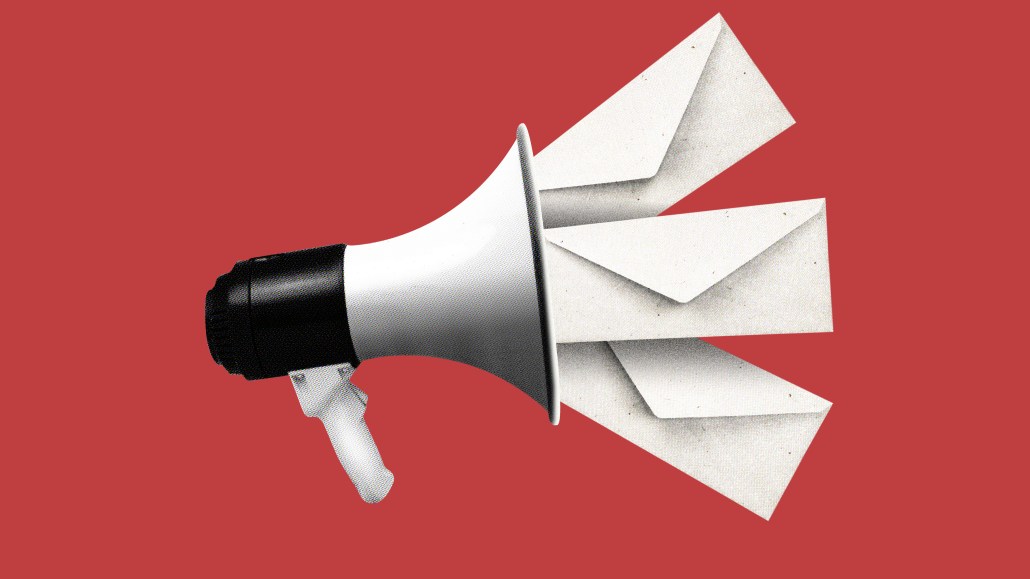Join us Dec. 1-3 in New Orleans for the Digiday Programmatic Marketing Summit
Substack creators attribute their boost in subscribers to the platform’s community tools

Substack’s bet that writers want the platform to provide a community just as much as distribution appears to be paying off in 2025.
Five newsletter creators who moved their operations over to Substack from other platforms such as Patreon and Beehiiv in the past year told Digiday that their following — and revenue — had grown since they made the jump, directly crediting Substack community tools such as co-livestreaming and recommendations for the subscriber boost. Their experiences show that Substack’s ongoing efforts to win over creators by becoming more of a community platform and less of a newsletter delivery service are successfully winning over some newsletter writers who value being part of a vibrant creative community.
“It’s like all my friends just switched to Substack; I saw it happening in front of my eyes,” said Kendall Dickieson, who told Digiday that she had her newsletter No Filter — which covers social media and creator strategy and has over 3,000 subscribers — gained 300 subscribers since moving from Beehiiv to Substack in June, a noticeably higher retention rate compared to the 75 subscribers she said she would typically gain during two months on Beehiiv.
Dickieson flagged Substack’s referral system as a particularly strong source of subscribers, with the writer gaining “25 to 50” new subscribers every time another creator in her community recommends her in a post — which she said typically happens about three times a week.
Dickieson was not the only writer to call out Substack’s recommendations — through which creators can suggest other writers, enabling their followers to subscribe to them with a button-click directly inside their newsletters, with the option to simultaneously subscribe to all recommended writers — as a strong subscriber growth tool. Creator Lewis O’Brien, who moved his data visualization newsletter from Beehiiv to Substack in late 2024, said that he has so far gained 1,319 subscribers from 66 recommendations. The creators told Digiday that Substack’s recommendation system is particularly potent because of its seamless nature, with users being able to subscribe to multiple new newsletters with the click of a button.
The fact that some writers are joining Substack for its community tools does not represent a mass exodus from other newsletter services. After all, some writers with established followings have made the jump from Substack to Beehiiv in 2025 because Beehiiv’s monetization structure allows them to make more money, and other writers have left Substack this year due to a perception that the platform is moving to the political right.
Alise Napp, the managing director of the U.S. politics podcast Pantsuit Politics, said that her podcast’s paid subscriber count was “slightly above” where it was on Patreon, but that its overall subscriber count including free subscribers — which currently stands at over 23,000 — had grown by “thousands” since joining Substack, which she said had allowed her podcast, Pantsuit Politics, to strengthen its pitch to prospective sponsors. Napp declined to share more detail on her subscription numbers. Her podcast has a range of sponsors, including Hungryroot, Oracle and Quince.
O’Brien, whose overall following has grown by nearly 9,000 since he joined Substack, said that the platform’s implementation of an algorithmic live feed that allows creators’ content to be served to non-subscribers was another significant source of his growth. He pointed to a recent post that had gained him 920 new subscribers — with 341 coming through the newsletter itself, and 579 through his post on Substack’s Notes feed.
“I had my Beehiiv newsletter for six months, with no organic growth through that platform,” said O’Brien, who said that his overall experience with Beehiiv had been positive, but that he felt Substack was more tailored to individual writers. “The more I’ve committed my time to Substack, the more compounding returns I’ve seen.”
Comedian and actor Eric Williams, who moved his humor newsletter from Patreon to Substack in April, said that his free subscriber count had similarly increased by nearly 1,000 since joining the platform, which he said represented a nearly tenfold increase from his overall following on Patreon, although he declined to share specific numbers.
“We love Patreon — they were great to us,” Napp said. “But you’re in your silo on Patreon; there’s no way that other people who follow similar things are finding you, and that has been an enormous benefit of Substack.”
A Patreon spokesperson pushed back against the idea that creators are siloed on the platform, pointing to Patreon’s rollout of tools such as livestreaming and recommendations over the past year, as well as ongoing updates to the live feed on Patreon’s home page. Usage of Patreon’s chat is up 63 percent year-over-year, with fans watching 80 million hours of Patreon video last year, representing a 41 percent year-over-year increase, with free memberships on Patreon up by 200 percent year-over-year and “over 700,000 free memberships convert to paid membership each month,” per the spokesperson.
“Our discovery tools, like creator-to-creator recommendations and the Explore tab, already drive more than $200 million annually to creators, and we’re continuing to invest in features like an improved home feed and recommendations to help creators reach and retain even more fans,” the spokesperson said. “What sets Patreon apart is the quality of the fan network. More than half of a creator’s new revenue on average comes from fans already on Patreon.”
Beehiiv CEO Tyler Denk flagged that his company had also launched an updated recommendations tool in July, but acknowledged that Beehiiv has fewer dedicated community features than Substack, saying that Beehiiv’s relatively siloed nature is by design. He pointed out that writers who rely on Substack’s community features to build their subscribership could face challenges in the future if these features were to change or go away.
A Substack representative declined to comment on this story, but shared the names of two creators it determined were successful on the platform, Napp and Williams. Substack’s leaders have been open about their vision for the company to become a community hub for years; in August 2022, Substack co-founder Hamish McKenzie published a blog post titled “Substack is for communities,” writing that the company was “deeply interested in building out further support and features for communities.”
“I think Substack is primarily looking to build a social network to compete with X, Threads and Bluesky, so there’s that algorithmic feed and the community video aspect to it,” Denk said. “The tradeoff there is that we’ve seen publishers and writers depend on algorithmic feeds from Facebook or Google search, and we’ve seen how that’s worked out.”
Substack’s push to implement more community tools is a natural part of the mounting arms race between newsletter platforms. As shown by Patreon’s rollout of similar community tools this year, as well as Beehiiv’s recent update to its recommendation system, Substack is not the only platform that is looking to win over creators by moving in this direction — but its efforts thus far appear to have won over a subset of writers who view their community as a key source of growth.
“Community is always going to be the number one thing,” Dickieson said. “If you can’t offer that, then you probably won’t make it.”
More in Media

WTF are synthetic audiences?
Publishers and brands are using AI to create a copy of audience behavior patterns to conduct market research faster and cheaper.

Forbes launches dynamic AI paywall as it ramps up post-search commercial diversification plans
For the latest Inside the publisher C-Suite series, Digiday spoke to Forbes CEO Sherry Phillips on its AI-era playbook, starting with its AI-powered dynamic paywall to new creator-led commercial opportunities.

Creators embrace Beehiiv’s push beyond newsletters
Creators are embracing Beehiiv’s new website, product and analytics tools to help them grow beyond the competitive newsletter space.






